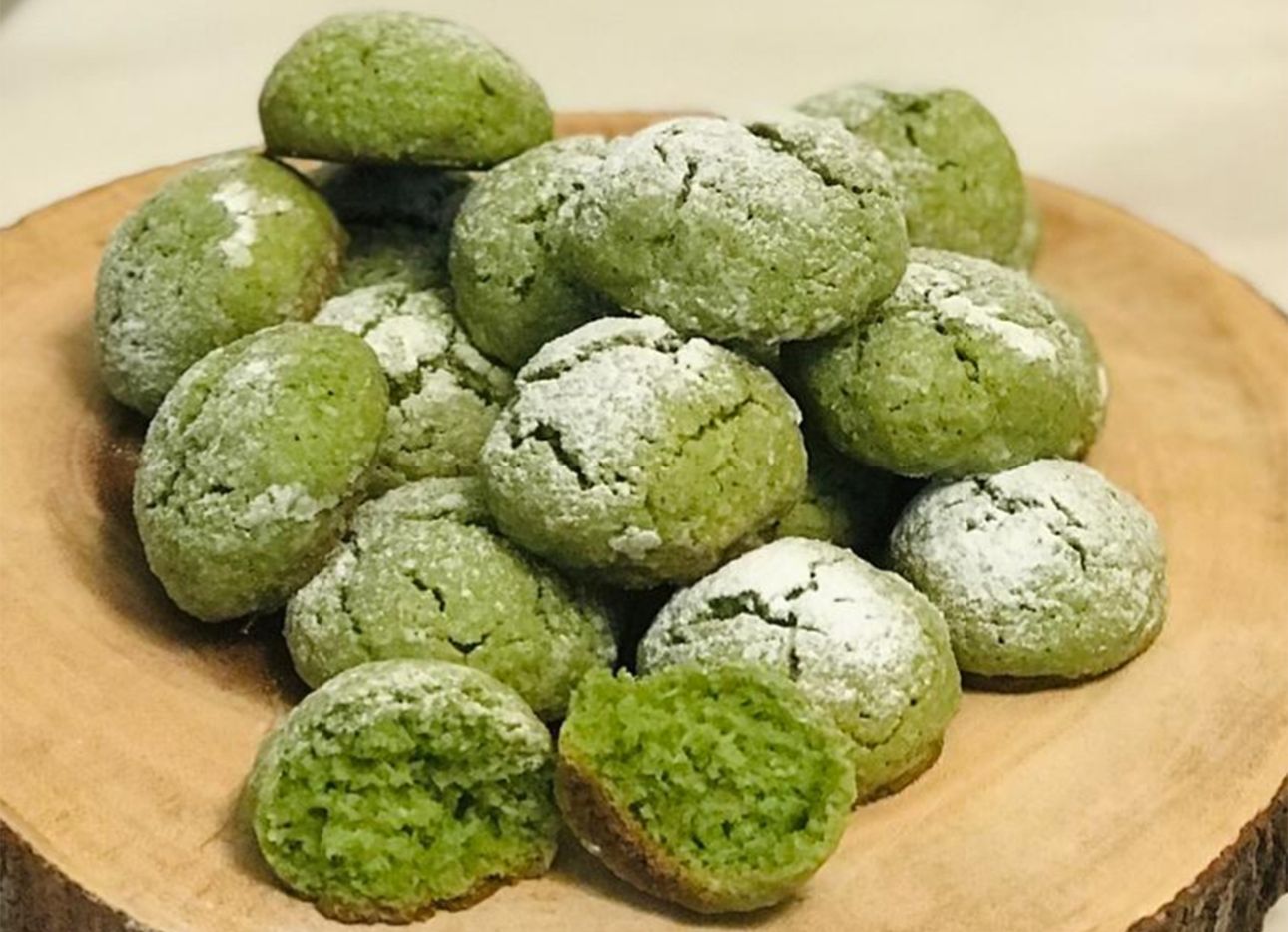
The Sweet, Adaptable Aroma of Southeast Asia’s Pandan Plant
Perhaps each of us has a Proustian trigger: a sensation that suddenly uncovers a memory buried in time, and by meeting our tongues, eyes, ears, or hands—or in this particular case, my nose—the trigger reveals a moment we’ve forgotten.
Twenty-five years ago, while walking through Singapore on a dark summer night with my family, we stumbled upon a barely lit jungle gym in a small public square. It was empty, save for a single food hawker closing up shop for the night, and a scent—unrecognizable to me as a child—wafting through the air from his cart.
At once herbaceous, sweet, and pungent—musky, with a verdant edge, like grassy vanilla—the aroma made its way into my nostrils, prompting me to stop and stare at the cart. My dad took me over to the man, who smiled, and placed a small pink cake into a steamer, warming it for a moment. He then slid the treat into a paper sleeve and handed it to me, a singular steamy redolence rising from the rim. Because I had no idea what it was or how to find it again, the snack’s floral scent followed me for years like a ghost I didn’t know was there.
Fast-forward to the present, when the object of this affectionate remembrance, thanks to the good folks at New York’s Kuih Café, has finally been revealed to me. What I ate—and sniffed—that night was a form of kuih, a bite-size, rice-based dessert that’s common across Southeast Asia and that comes in a rainbow of colors. Kuih often gets its delightful smell from the creative use of pandan, or screwpine, a tropical plant that grows abundantly in the region and sprouts highly fragrant, blade-shaped leaves.
According to Barnny Lim, who handles business development at the café, pandan “is used mainly to give [food] a green color from a natural source. Its juice is extracted from the leaves, and mixed with the ingredients.” Its aromatic impact, he continues, is equally striking. “Pandan, in its raw form or when cooked, has an aroma similar to vanilla, which is its unique and distinctive quality,” he says. “[It] doesn’t have a specific flavor, other than its inherent grass [taste], which makes it adaptable to other flavors.”
Perhaps that’s why the perfumy plant is becoming increasingly common in fare prepared far beyond where it grows natively. (In 2017, the prominent English food writer Nigella Lawson boldly predicted that pandan would soon surpass matcha and avocado toast in popularity in the United States, followed by Britain.) The enigmatic palm can currently be found in everything from ice cream—a variety from Morgenstern’s incorporates swirls of pandan jelly, while New York’s Chinatown Ice Cream Factory offers scoops of smooth, neon-green goodness—to jam, as in Moon Man’s sweet-smelling spread intended for topping toast or cakes. Its scent has permeated industries outside the culinary world, too: Cab drivers in Vietnam are fond of using the leaves as air fresheners for their cars, while the Indian fragrance brand Kannauj Attar offers a pandan essential oil that doubles as a refreshing, honey-like perfume.
But for those who were raised around the plant, its fragrance can be less a satisfying scent than a powerful, somatic reminder of home. “Many born in Southeast Asia grow up eating items flavored with pandan, both in day-to-day life and also during festivities,” Lim says. “When one catches a sniff of the pandan aroma, it can transport them back to that time, and allow them to reminisce about those cherished moments.”